DIBROMODIFLUOROMETHANE
- CAS NO.:75-61-6
- Empirical Formula: CBr2F2
- Molecular Weight: 209.82
- MDL number: MFCD00000367
- EINECS: 200-885-5
- SAFETY DATA SHEET (SDS)
- Update Date: 2025-01-27 09:38:02

What is DIBROMODIFLUOROMETHANE?
Description
Difluorodibromomethane is a colorless heavy liquid or gas (above 24℃/76°F) with a characteristic odor.Molecular weight=209.83; Boiling point=24℃; Freezing/Melting point=-146℃; Vapor pressure=620 mmHg.Hazard Identification (based on NFPA-704 M Rating System):Health 1, Flammability 0, Reactivity 1. Insoluble in water.
Chemical properties
clear colorless to pale yellow liquid
Physical properties
Colorless liquid or gas with a characteristic odor
The Uses of DIBROMODIFLUOROMETHANE
Fire-extinguishing agent
The Uses of DIBROMODIFLUOROMETHANE
Synthesis of dyes; quaternary ammonium compounds; pharmaceuticals; fire-extinguishing agent.
General Description
DIBROMODIFLUOROMETHANE is a colorless, nonflammable liquid. DIBROMODIFLUOROMETHANE may cause illness from ingestion and may be irritating to skin. If exposed to high temperatures DIBROMODIFLUOROMETHANE may emit toxic fumes. The primary hazard is the threat to the environment. Immediate steps should be taken to limit its spread to the environment. Since DIBROMODIFLUOROMETHANE is a liquid DIBROMODIFLUOROMETHANE can easily penetrate the soil and contaminate groundwater and nearby streams. DIBROMODIFLUOROMETHANE is used as a fire extinguishing agent.
Reactivity Profile
DIBROMODIFLUOROMETHANE is incompatible with the following: Chemically-active metals such as sodium, potassium, calcium, powdered aluminum, zinc & magnesium .
Health Hazard
Inhalation of material may be harmful. Contact may cause burns to skin and eyes. Inhalation of Asbestos dust may have a damaging effect on the lungs. Fire may produce irritating, corrosive and/or toxic gases. Some liquids produce vapors that may cause dizziness or suffocation. Runoff from fire control may cause pollution.
Fire Hazard
Some may burn but none ignite readily. Containers may explode when heated. Some may be transported hot.
Safety Profile
Mddly toxic by inhalation. A non-flammable liquid. When heated to decomposition it emits very toxic fumes of Brand F-
Potential Exposure
This material is used as a fire-extinguishing agent and in making dyes and pharmaceuticals.
First aid
If this chemical gets into the eyes, remove anycontact lenses at once and irrigate immediately for at least15 min, occasionally lifting upper and lower lids. Seek medical attention immediately. If this chemical contacts theskin, remove contaminated clothing and wash immediatelywith soap and water. Seek medical attention immediately. Ifthis chemical has been inhaled, remove from exposure,begin rescue breathing (using universal precautions, including resuscitation mask) if breathing has stopped and CPR ifheart action has stopped. Transfer promptly to a medicalfacility. When this chemical has been swallowed, get medical attention. Give large quantities of water and inducevomiting. Do not make an unconscious person vomit. Iffrostbite has occurred, seek medical attention immediately;do NOT rub the affected areas or flush them with water. Inorder to prevent further tissue damage, do NOT attempt toremove frozen clothing from frostbitten areas. If frostbitehas NOT occurred, immediately and thoroughly wash contaminated skin with soap and water.
storage
Color Code—Green: General storage may be used.Difluorodibromomethane must be stored to avoid contactwith chemically active metals, such as sodium, potassium,calcium, powdered aluminum, zinc, and magnesium sinceviolent reactions occur. Store in tightly closed containers in acool, well-ventilated area away from heat.
Shipping
This compound does not require a shipping label.It falls in Hazard Class 9 and Packing III. The symbol “A”restricts the application of requirements of this subchapterto materials offered or intended for transportation by aircraft, unless the material is a hazardous substance or a hazardous waste.
Incompatibilities
Reacts with chemically active metals,such as sodium, potassium, calcium, powdered aluminum,zinc, magnesium. Attacks some plastics, rubbers, andcoatings.
Properties of DIBROMODIFLUOROMETHANE
| Melting point: | -141 °C |
| Boiling point: | 24.5 °C |
| Density | 2.297 g/mL at 25 °C(lit.) |
| vapor density | 7.24 (vs air) |
| vapor pressure | 12.79 psi ( 20 °C) |
| refractive index | 1.398-1.402 |
| Flash point: | None |
| storage temp. | 2-8°C |
| solubility | Soluble in acetone, alcohol, benzene, and ether (Weast, 1986) |
| form | Colorless liquid or gas |
| Water Solubility | Insoluble |
| BRN | 1732515 |
| Henry's Law Constant | 1.72 x 10-2 atm?m3/mol at 26 °C (static headspace-GC, Saini et al., 2002) |
| Exposure limits | NIOSH REL: TWA 100 ppm (860 mg/m3), IDLH 2,000 ppm; OSHA PEL:
TWA 100 ppm. |
| CAS DataBase Reference | 75-61-6(CAS DataBase Reference) |
| NIST Chemistry Reference | Methane, dibromodifluoro-(75-61-6) |
| EPA Substance Registry System | Dibromodifluoromethane (75-61-6) |
Safety information for DIBROMODIFLUOROMETHANE
| Signal word | Warning |
| Pictogram(s) |
 Exclamation Mark Irritant GHS07 |
| GHS Hazard Statements |
H315:Skin corrosion/irritation H319:Serious eye damage/eye irritation H335:Specific target organ toxicity, single exposure;Respiratory tract irritation H420:Hazardous to the ozone layer |
| Precautionary Statement Codes |
P261:Avoid breathing dust/fume/gas/mist/vapours/spray. P264:Wash hands thoroughly after handling. P264:Wash skin thouroughly after handling. P271:Use only outdoors or in a well-ventilated area. P302+P352:IF ON SKIN: wash with plenty of soap and water. P305+P351+P338:IF IN EYES: Rinse cautiously with water for several minutes. Remove contact lenses, if present and easy to do. Continuerinsing. P502:Refer to manufacturer/supplier for information on recovery/recycling |
Computed Descriptors for DIBROMODIFLUOROMETHANE
New Products
3-Iodophenylacetic acid 3-Pyridineacetonitrile, α-hydroxy- 2-Propanamine, 1-chloro-, hydrochloride (9CI) 3-(hexyloxy)-4-(pyridin-3-yl)-1,2,5-thiadiazole 2-Hexyn-1-ol Dibenzo-18-crown-6 Nickel(II) perchlorate hexahydrate, 98% 4-Bromophenylacetonitrile, 95% 3-Bromo-4-fluoroaniline, 97% Sodium tetraborate decahydrate, 98% Palladium(II) acetate, trimer, Pd 99% 4-Bromo-2-chlorotoluene, 97% N N Dimethylformamide Dimethyl Acetal (Dmf Dma) 2,3-Dichloro Benzoyl Cyanide [Side Chain] Bis(2-Chloroethyl) Amine Hydrochloride L-Glutamic Acid Diethyl Ester Hydrochloride 5-(Difluoromethoxy)-2-Mercaptobenzimidazole 1-Ethyl-3-(3-Dimethylaminopropyl)-Carbodiimide Hydrochloride [EDC Hcl] 1,4-Napthoquinone Bromoiodomethane Sodium Bicarbonate Methylene Dichloride (MDC) Ethyl Acetate Indole-3-Carbinol (I3C)Related products of tetrahydrofuran
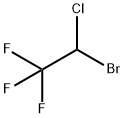
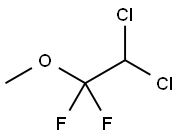
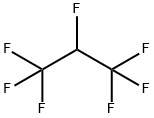

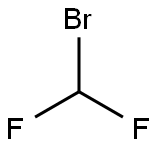
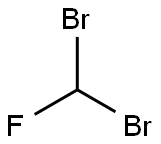


You may like
-
 Dibromodifluoromethane 98%View Details
Dibromodifluoromethane 98%View Details -
 17604-74-9 3-Pyridineacetonitrile, α-hydroxy- 98+View Details
17604-74-9 3-Pyridineacetonitrile, α-hydroxy- 98+View Details
17604-74-9 -
 131987-69-4 98+View Details
131987-69-4 98+View Details
131987-69-4 -
 Cyclohexane, (2-propynyloxy)- 67967-07-1 98+View Details
Cyclohexane, (2-propynyloxy)- 67967-07-1 98+View Details
67967-07-1 -
 764-60-3 2-Hexyn-1-ol 98+View Details
764-60-3 2-Hexyn-1-ol 98+View Details
764-60-3 -
 2-Propanamine, 1-chloro-, hydrochloride (9CI) 98+View Details
2-Propanamine, 1-chloro-, hydrochloride (9CI) 98+View Details
5968-21-8 -
 3-Iodophenylacetic acid 1878-69-9 98+View Details
3-Iodophenylacetic acid 1878-69-9 98+View Details
1878-69-9 -
 132945-75-6 (S)-1-Boc-3-methanesulfonyloxy-pyrrolidine 98+View Details
132945-75-6 (S)-1-Boc-3-methanesulfonyloxy-pyrrolidine 98+View Details
132945-75-6
